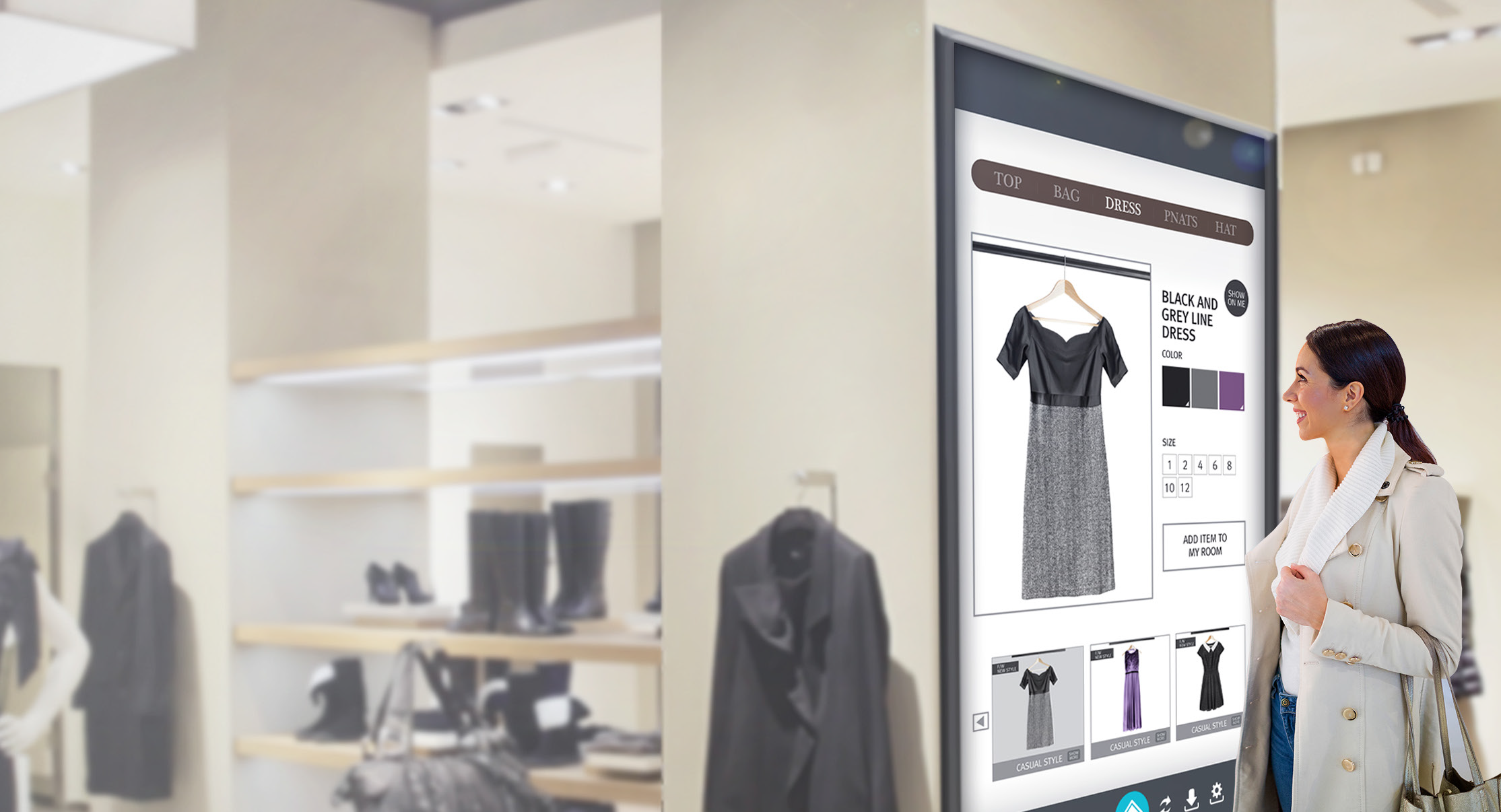
Algorithms and automation are two of the biggest buzzwords in marketing and IT, and for good reason. Incorporating algorithmic decision-making enables you to scale processes rapidly and efficiently in a way that is data-driven and responsive. Programmatic buying has in fact transformed online advertising over the past few years, with industry estimates projecting that programmatic buying will account for 85.2% of digital display ad purchases by 2019 (Source: eMarketer). While the benefits of programmatic buying can be extended to DOOH, some tweaks are needed to enable the same efficiency and scalability programmatic buying brings to the world of internet advertising.
Programmatic buying: a crash course
Programmatic buying is a mechanism for purchasing ads using data, software and automation as opposed to having humans do the work. Generally, software for programmatic buying will leverage some sort of application programming interface (API) and algorithms to purchase ads. This software usually interacts with programmatic selling software on the other end that functions in a similar fashion.
Software-driven workflows enable rapid, highly targeted, data-driven marketing campaigns that are well suited for online environments. The data- rich mobile and Internet advertising space is ideal for this sort of process as it is easy to not only plan and create a campaign, but also to measure its effectiveness, generate reports, learn what works, and iterate from there. As this cycle repeats, programmatically-driven marketing campaigns can become more and more effective for marketers.
Current challenges with programmatic buying & out-of-home advertising
While a data-driven, automated approach to media buys makes sense online, reaping the full benefits of programmatic buying in the out-of-home space is something of an uphill battle today. Although there has been significant progress in the DOOH industry, the move towards programmatic buying is not yet as pronounced as in the online and mobile space. Ad exchanger indicates that only 39% of marketing planners are aware that digital out-of-home ads can be purchased programmatically (Source: Adexchanger).
Furthermore, there are technological and workflow difficulties with programmatic buying in an out-of-home environment. For example, online, capturing data on consumers and the effectiveness of a given campaign is “easy”. Cookies from web browsers and user data from
mobile apps make it possible to capture historical and demographic information about consumers and serve them targeted content. Each campaign is effectively a composed of many one-to-one interactions in a digital world that isn’t limited by the constraints of physical real estate. Further, the transactions that occur can be tracked and reported against with ease.
The scenario in the out of home space is very different. Not only is there a limited amount of physical space to work with, there is an inherent “one-to-many” approach that comes along with out-of- home ads that makes tracking its impact on a given consumer significantly harder to quantify. Ad purchasers need to engage different media owners personally and carry out a campaign in a heterogeneous environment that is difficult to automate effectively. Further, “proof of play” reports may often conflict or require a physical audit.
Ensuring transparency and compliance when handling first-party data can be a complicated endeavor in an environment where interactions are one-to-many. For these reasons, advertising campaigns in the DOOH space often require significant manual oversight. This manual interaction further increases the likelihood for human error and more issues down the line. While many vendors have attempted to bring new ideas to the DOOH space, the market has suffered from the “black-box” nature of the different technologies available that make it difficult to integrate it with software-based workflows at scale.
What’s needed to enable scalable programmatic buying with DOOH?
By understanding how DOOH is different from online advertising, we can create an environment conducive to effective programmatic buying and scalability in the DOOH space. The key areas that need to be addressed to make this possible are:
• Accurate counting of DOOH impressions- If you’re not assessing you’re not progressing. One of the primary reasons online advertising is able to be so targeted and effective is the ability for marketers to measure clicks, page view time, and other impressions with a high level of granularity. As smart cameras, beacons, sensors capable of tracking dwell time & other customer behaviors become more prevalent, DOOH will be able to iterate in a similar fashion. A big part of ensuring this occurs will be solving “Proof-of-Play” problems. In short, marketers need validation that their ads have actually run when they should have, and the industry needs to provide a means for that to occur without requiring arduous, labor-intensive, expensive audits.
• Optimized DOOH workflows- There are a number of workflow challenges that are unique to DOOH when compared to online:
• Media owners must pre-approve the content that will be displayed on their screens
• More network bandwidth is required to serve content in DOOH applications
• First-party data is not standardized
• Physical hardware requires maintenance (either as a result of wear and tear, damage, or vandalism)
• Standardized, transparent, DOOH Supply-Side Platforms (SSPs) - Open, competitively-priced, fair, exchanges will be key to enabling programmatic buying at scale in the DOOH space. Quantifying the value of DOOH real estate is currently not as clear cut as the value of a web page that generates 100,000 unique page views a day and knows their demographics. Enabling market demand to drive prices by way of fair and transparent exchanges will have significant economic benefits on DOOH. Clear Channel Outdoor Americas’ announcement of the development of a programmatic OOH buying solution in conjunction with Rubicon Project, was just one of many steps in the right direction in this regard. Another major benefit of supply-side platforms is applying the same logic to personal data. By enabling data owners to set the rules and prices related to use of their data, the industry enjoys increased compliance, transparency and protection of first party data.
The good news is that much of the framework for what needs to be done is already here. As DOOH matures, advertisers will benefit from a more seamless ad purchasing experience in the DOOH space and enhanced reporting and analytics. The DOOH industry is on the path toward impressive growth over the next 5 to 10 years as the market develops and benefits from increased adoption of related technologies like IoT, beacons, smart sensors, and augmented reality.

Romulus is a seasoned advertising and marketing executive with nearly two decades of experience in domestic and international business strategy and execution, development, strategic partnerships and smart analytics for audience measurement, mobile and digital media innovation in OOH advertising. At Samsung SDS, Romulus leads DOOH Marketing Solutions and is responsible for product management, market positioning and strategy for digital out of home advertising in the US and Canada.
- Four Big IT Transformations for Enterprise Agility
- An Agile Approach, the Core of Corporate DT for Working Culture Innovation
- Digital ESG, a Critical Success Factor for ESG
- Conversational AI War Begins. Who Will Be the Winner?
- What Is Matter, the New Smart Home Standard?
- 2023 Forecast for Technology Trends
